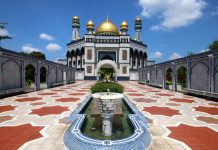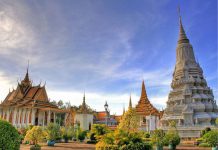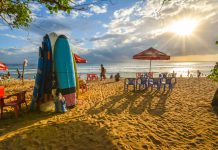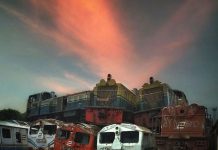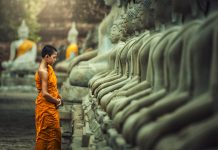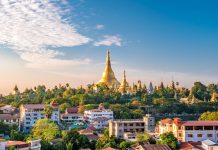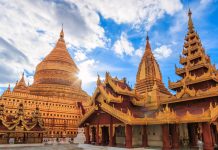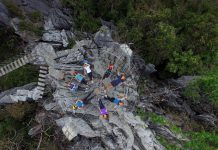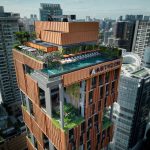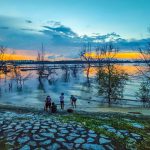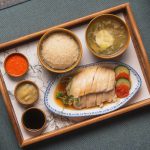If you only have time for one museum, make it the National Gallery Singapore.
The 64,000sqm Gallery is spread across the former City Hall and Supreme Court buildings, two national monuments which have been beautifully restored and transformed. Besides housing the world’s largest public collection of modern art from Singapore and Southeast Asia, the Gallery is also home to amazing restaurants including the three Michelin-starred Odette and one Michelin-starred Art di Daniele Sperindio.
The two buildings are connected by two link bridges located in the atrium of the buildings. The bridges are complemented by a distinctive metal and glass canopy supported by tree-like columns. More than 15,000 glass and aluminium panels were used to construct and form the roof and veil of the Gallery, resulting in an ethereal feel when natural light floods in.
A great way to explore the many fascinating facets of the Gallery is to join a guided tour. Let the docent lead you on a deeper discovery of the Gallery’s architecture, heritage, artworks, hidden gems and more.
To end your tour with a cocktail of your choice at rooftop bar Smoke & Mirrors while taking in panoramic views of Singapore’s skyline, join the Art x Cocktails Tour.
But if you want to explore the Gallery on your own, here are the exhibits and spaces to make a beeline for.
Tropical: Stories from Southeast Asia and Latin America
Till 24 March
Level 3, City Hall Wing, Singtel Special Exhibition Gallery
Did you know that Southeast Asia and Latin America have many similarities? The Gallery’s latest blockbuster exhibition uncovers how both regions, despite being thousands of kilometres apart, share similarities that reflect the rich tapestry of their histories, traditions and global influences.

Explore over 200 artworks, sculptures, drawings, performances and immersive installations by more than 70 artists including cultural icons like Frida Kahlo, Diego Rivera, Paul Gauguin, Latiff Mohidin and Affandi.
The exhibition extends across three galleries, each exploring distinct themes: The Myth of the Lazy Native, This Earth of Mankind and The Subversive. Be sure to check out the interactive and reading zones within each gallery. You’ll get to wear sensory masks and goggles, dance around in capes, browse reading materials in a “library” and engage with sensory objects through guided movements and interactions.

Diálogo. Óculos (Dialogue.
Goggles)
1968
Industrial rubber, metal and glass
Courtesy Associação Cultural “O Mundo de Lygia Clark”
Over at the historic City Hall Chamber is where Hélio Oiticica’s most influential installation, Tropicália, is realised in Southeast Asia for the first time. As a critique of popular constructions of Brazil as a “tropical paradise”, the artwork interrogates complex realities of everyday life in the Global South. Step into the artwork that features concrete slabs, plants, macaws, sand, gravel and wooden structures, and enter a multi-sensorial realm as you contemplate the stark juxtaposition between idyllic stereotypes and the harsh realities of Brazilian life.
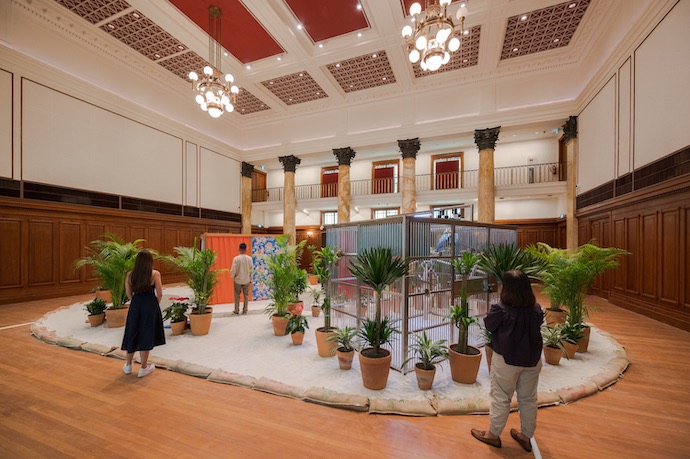
Tropicália
1966–1967, remade 2023
Wooden structures, fabric, plastic, carpet, wire mesh, tulle, patchouli, sandalwood, television, sand, gravel, plants, birds, television and poems by Roberta Camila Salgado, dimensions variable
Collection of Projeto Hélio Oiticica
DBS Singapore Gallery
Level 2, City Hall Wing
This permanent gallery, spread across three sub-galleries, provides an insight into the history of Singapore art through its 300+ artworks from the National Collection.
The gallery’s long-term exhibition, titled “Siapa Nama Kamu?” (Malay for “What is Your Name?”), examines how artists in Singapore responded to their surroundings and circumstances since the 19th century, when much of Southeast Asia was under European colonial rule.
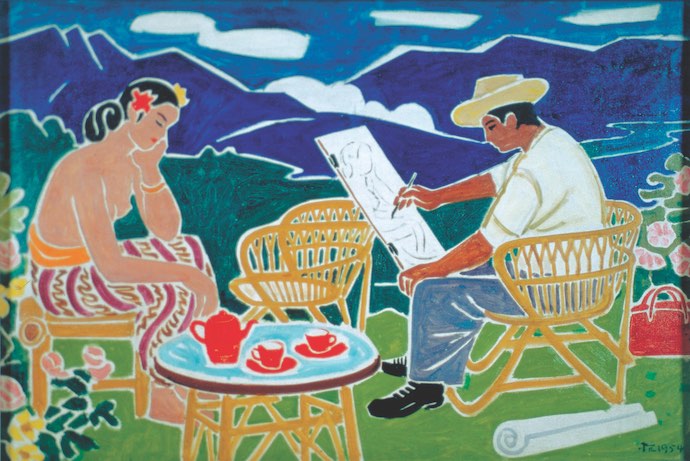
Artist and Model
1954
Key pieces to look out for in this gallery include Liu Kang’s Artist and Model and Life by the River; Georgette Chen’s Lotus in a Breeze; Chua Mia Tee’s National Language Class; Ong Kim Seng’s Night Calligrapher; Cheong Soo Pieng’s Returning from Market; and Lee Man Fong’s Kehidupan di Bali (Balinese Life).
UOB Southeast Asia Gallery
Level 3, Supreme Court Wing
Spread across three floors (levels 3 to 5), this permanent gallery showcases the works of artists from Southeast Asian countries like Indonesia and the Philippines.
The over 300 artworks are presented in a largely chronological sequence and punctuated by key turning points in artistic sensibilities, demonstrating how art is inseparably linked to the region’s tumultuous social and political history.

Boschbrand (Forest Fire)
1849
Look out for Raden Saleh’s largest painting Forest Fire and Shipwreck in Storm; Juan Luna’s Espana y Filipinas (Spain and the Philippines); San Minn’s Age of Full Bloom; Chua Mia Tee’s Epic Poem of Malaya; Nguyen Gia Tri’s Landscape of Vietnam and Phra Soralaklikhit’s Portrait of King Nangklao.
Keppel Centre for Art Education
Level 1, City Hall Wing
A must-visit for families with kids, the Centre boasts five immersive spaces where the young ones can learn about Singapore and Southeast Asian art in different and inspiring ways. Kids can let their creativity take flight through self-led exploration and fun art-making activities.

On selected weekends, there is a line-up of interactive programmes including storytelling and art-viewing tours.
While you’re there, bring the kids to the Gallery’s Children’s Biennale, themed “Let’s Make a Better Place”, which showcases 11 interactive and immersive artworks that spotlight four core values of care, respect, imagination and collaboration.
Chief Justice’s Chamber & Office
Level 3, Supreme Court Wing
Check out the space where the Chief Justice used to conduct his administrative duties and admire the locally produced teak wood furniture that were hand-carved by Singapore-based craftsmen trained in British workmanship.

Look out also for a landmark document, dated 9 August 1965, proclaiming Singapore’s separation from Malaysia and its beginnings as an independent and sovereign republic. It was drafted by then Minister of Law Edmund Barker and signed by then Prime Minister Lee Kuan Yew.
The Two Remaining Former Supreme Court Holding Cells
Level 1, Supreme Court Wing
One of the Gallery’s most photographed spaces, the two original holding cells were where defendants were held between the time they were brought to the Supreme Court and when their trial started.
Defendants were escorted into the building through the rear entrance via a series of suspended steel corridors that led directly from the cells to the four original courtrooms.
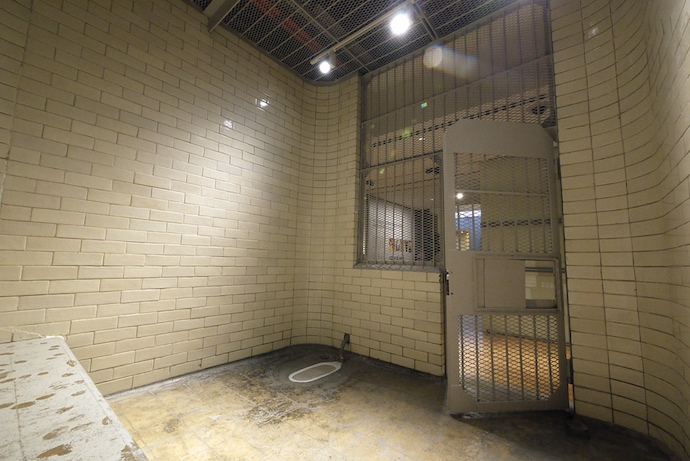
Each cell had a concrete bench and a squat toilet. The toilet flushes were located outside the cells to prevent those awaiting trial from harming themselves with the flush chains.


